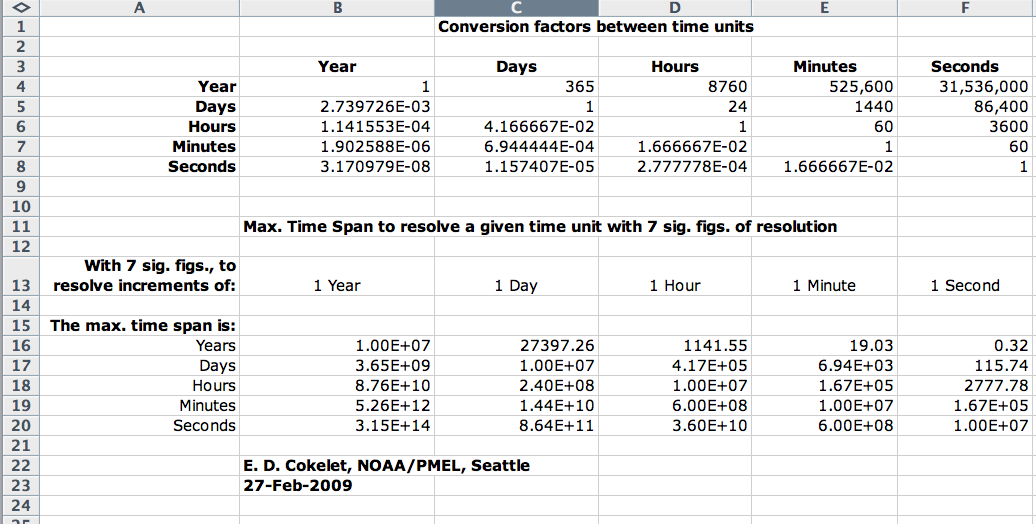
| I am aware that when setting up time axes limits in Ferret using real numbers (usually as a result of some computation), one comes up against significant figure loss. In response to Patrick Brockmann's post, I have thought about this a little. What I present is not complete, but perhaps it will get others thinking. I wanted to figure out, for instance, how long an axis one can define and still resolve times down to 1 second. Real*8 floating point numbers are usually reckoned to have 7 significant figures, so I used that value. The attached table (in png and Excel form) shows the results. An example of how to use this is as follows: from row 16 one can see that with 7 sig. figs., one can define an axis of up to 0.32 years long in units of seconds and still resolve 1 second time increments. Similarly from row 18, one can define an axis 2.48 x 10**8 hours long and still resolve time increments down to 1 day. This assumes that the T0 one defines is hard up against the beginning of the the axis. If your T0 is 1-Jan-1900, your axis time increment is 1 second, and your data begin on 1-jan-2009, then the first data point is at about 63,355,824,000 seconds which would require 11 sig. figs. to resolve. I hope this helps! P.S. I am not a Ferret developer, but simply a user. |
Attachment:
sig_figs.xls
Description: Binary data
------------------------------------------------------------------------------------------ Edward D. (Ned) Cokelet, Ph.D. Oceanographer NOAA/PMEL off: (206) 526-6820 7600 Sand Point Way NE fax: (206) 526-6485 Seattle, WA 98115-6349 The contents of this message are mine personally and do not necessarily reflect any position of the Government or the National Oceanic and Atmospheric Administration. |